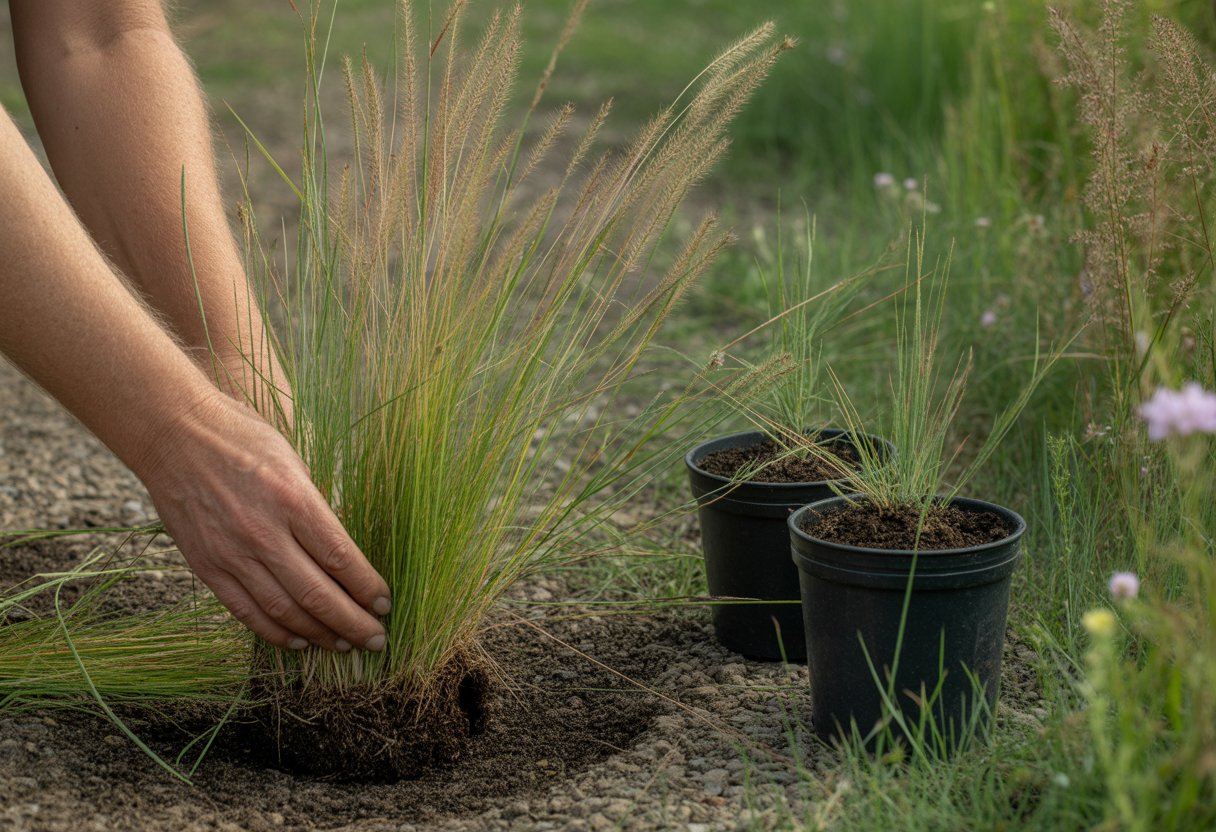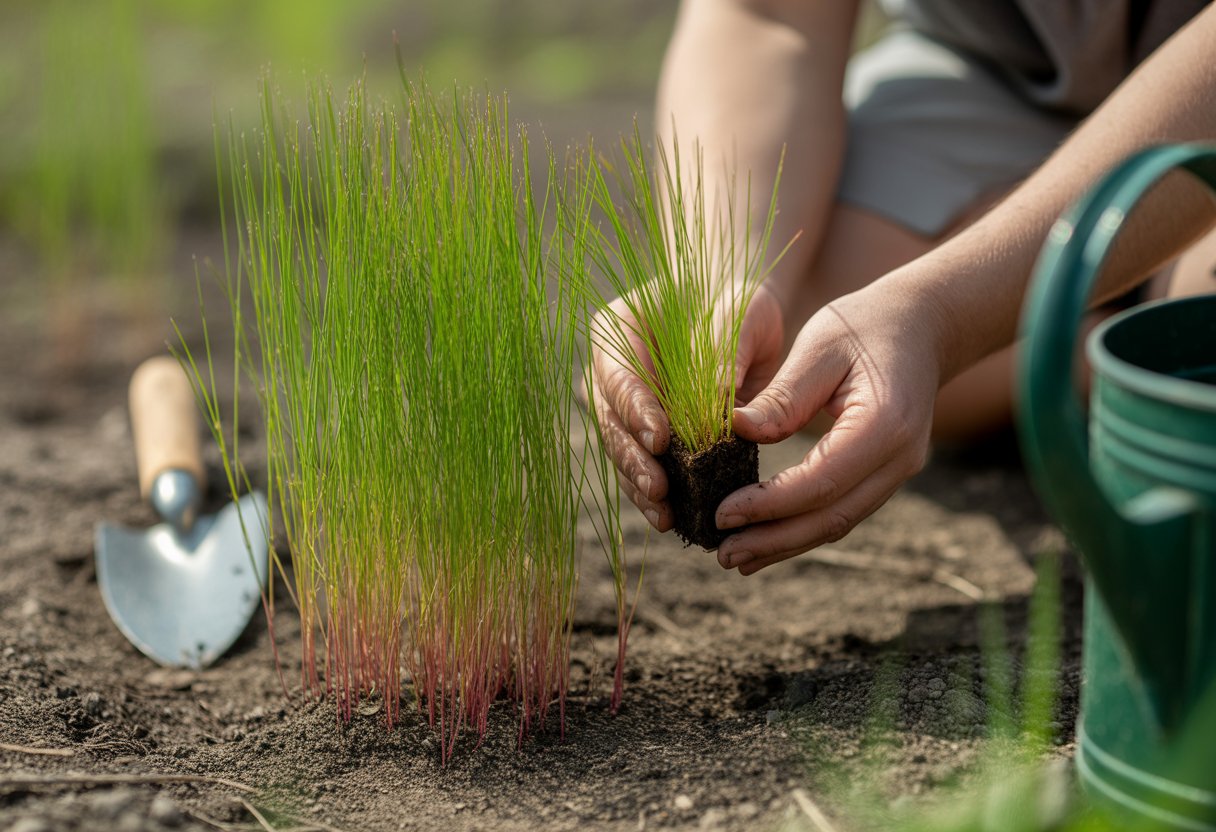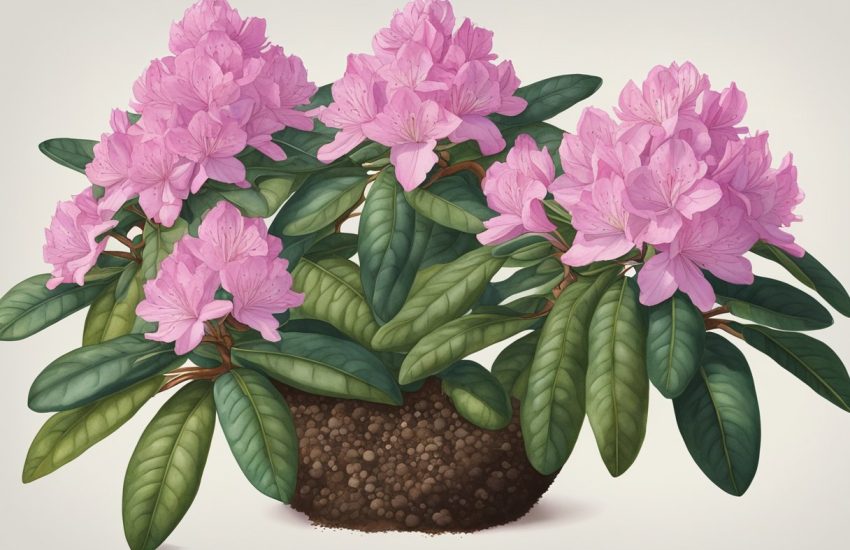How to Propagate Prairie Dropseed Efficiently for Healthy Growth
Prairie dropseed (Sporobolus heterolepis) is a native, low-maintenance ornamental grass. You can propagate it by dividing established clumps or starting from seed.
The easiest and most reliable way to propagate prairie dropseed is by dividing established clumps in early spring or fall. This approach usually leads to faster, healthier plants than starting from seed.

Collecting and sowing seeds works too, but you’ll need patience. Seeds need stratification, and germination can drag out for weeks.
Prairie dropseed’s adaptability and fine texture make it a favorite for naturalistic landscaping. Knowing how to propagate it means you can spread its charm across gardens and restoration projects.
Understanding Prairie Dropseed
Prairie dropseed is a perennial grass with a reputation for toughness and fine texture. Gardeners who love native plants and easy-care landscapes often reach for it.
Its growth habits, adaptability, and value to wildlife set it apart in the world of ornamental grasses.
Botanical Characteristics
Prairie dropseed (Sporobolus heterolepis) is a warm-season perennial with delicate, arching foliage. Mature plants reach about 2 to 3 feet tall and form rounded, fine-textured clumps.
Leaves shift from green to shades of gold and cream as the seasons change, especially in fall. The foliage sometimes surprises you with a fragrance reminiscent of coriander when crushed.
Seed heads pop up in late summer, sending out small, light seeds. These disperse naturally, so you might spot new seedlings nearby if conditions are right.
You’ll also find related species like northern dropseed and dwarf prairie dropseed. They share the family look but differ in size and where they thrive.
Adaptability and Hardiness
Prairie dropseed handles hardiness zones 3 to 9 with surprising resilience. It shrugs off cold winters and moderate heat.
It wants full sun but will tolerate a bit of shade. The roots adapt well to well-drained soils and manage in medium, sandy, dry, or moist soil.
Once established, this grass is drought tolerant. Still, it appreciates moderate watering, especially when young.
Wet, poorly drained soils just don’t work for it. But if you’ve got a spot with decent drainage, prairie dropseed will probably thrive.
Wildlife and Ecological Value
Prairie dropseed supports local wildlife in a few ways. Birds eat the seeds, and the dense clumps offer shelter.
It’s also deer resistant, which is a relief if you’ve struggled with browsing damage before. That makes it a solid choice for sustainable landscaping.
As a native prairie grass, it helps stabilize soil and indirectly supports pollinators. Its slow growth and fine texture make it a go-to for borders in perennial gardens.
Propagation Methods for Prairie Dropseed
You can propagate prairie dropseed by seed or by dividing mature clumps. Each method has its quirks and timing matters, especially for moisture and sun.
Seed Collection and Preparation
Prairie dropseed seeds ripen from late summer into fall, turning a golden brown. Collect them when they’re mature but before the seed heads shatter.
A paper bag helps keep the seeds from escaping during harvest. Clean off the chaff for best results.
Seeds need cold stratification to wake up. Stick them in moist sand or peat in the fridge for 60 to 90 days—this breaks dormancy and boosts germination.
Sowing and Germinating Seeds
Sow seeds in early spring after stratification. They like well-drained soil and steady moisture, but don’t let them sit in water.
Light helps, so scatter seeds on the surface or barely cover them with fine soil. Germination can take anywhere from 2 to 6 weeks—sometimes longer if the weather’s fickle.
Keep the temperature around 68°F (20°C) if you can. Seedlings start slow, so patience is key before moving them outdoors.
Division of Established Clumps
Divide prairie dropseed clumps in early spring or late fall. This method gives you mature plants faster than seeds.
Dig up the clump gently, trying not to mangle the fibrous roots. Use a sharp spade or knife to cut it into sections, making sure each one has several shoots.
Replant the divisions in well-drained soil and full sun. Water them regularly until you see new growth, but don’t overdo it—soggy soil can cause root rot.
Caring for Young Prairie Dropseed Plants

Young prairie dropseed needs the right mix of sunlight, soil, and watering to get off to a strong start. Placement and soil quality matter a lot in those first weeks.
Routine care—nothing fancy—helps the plants settle in and bounce back from transplant stress.
Optimal Growing Conditions
Prairie dropseed thrives in full sun. Give it at least six hours of direct sunlight for that signature texture and compact shape.
The best soil is well-drained with dry to medium moisture. Avoid heavy or waterlogged spots; root rot is a real risk.
Sandy or loamy soils drain well and keep roots happy. Neutral to slightly acidic pH works, but honestly, prairie dropseed isn’t too picky about pH.
Mixing in organic matter can help sandy soils hold moisture without turning muddy.
Maintenance and Establishment
Water young prairie dropseed regularly for the first 4-6 weeks. Keep the soil consistently moist but not soggy.
A thin layer of organic mulch helps with moisture and weeds, just don’t bury the crown. Skip heavy fertilizers; a light dose of balanced, slow-release fertilizer in early spring is plenty.
Once prairie dropseed settles in, it’s pretty much hands-off. Tidying up dead foliage in late winter keeps things looking fresh.
Potential Issues and Solutions

Prairie dropseed stands up to most problems, but a few things can still go wrong. Knowing what to watch for makes life easier.
Common Diseases
Prairie dropseed rarely gets sick, but sometimes fungal infections like rust or leaf spot show up. Look for orange or brown spots on the leaves.
To cut down on fungal issues, water at the base and space plants for airflow. Remove infected leaves to slow the spread.
A fungicide with chlorothalonil can help if things get out of hand. Keep an eye out for early symptoms so you can act quickly.
Managing Pests and Wildlife
Prairie dropseed is deer resistant, so deer rarely bother it. Still, pests like aphids and spider mites sometimes feed on the leaves, leaving yellow spots or tiny speckles.
Check your plants often for signs of trouble. If you spot aphids or mites, try insecticidal soaps or neem oil—they usually do the trick and won’t harm the plant.
Birds don’t usually mess with prairie dropseed, but sometimes they kick up soil around new plantings. You might want to toss on some fine netting to keep young plants safe.
Keep your plants healthy with proper watering and nutrition. That goes a long way toward fending off most pest issues.


